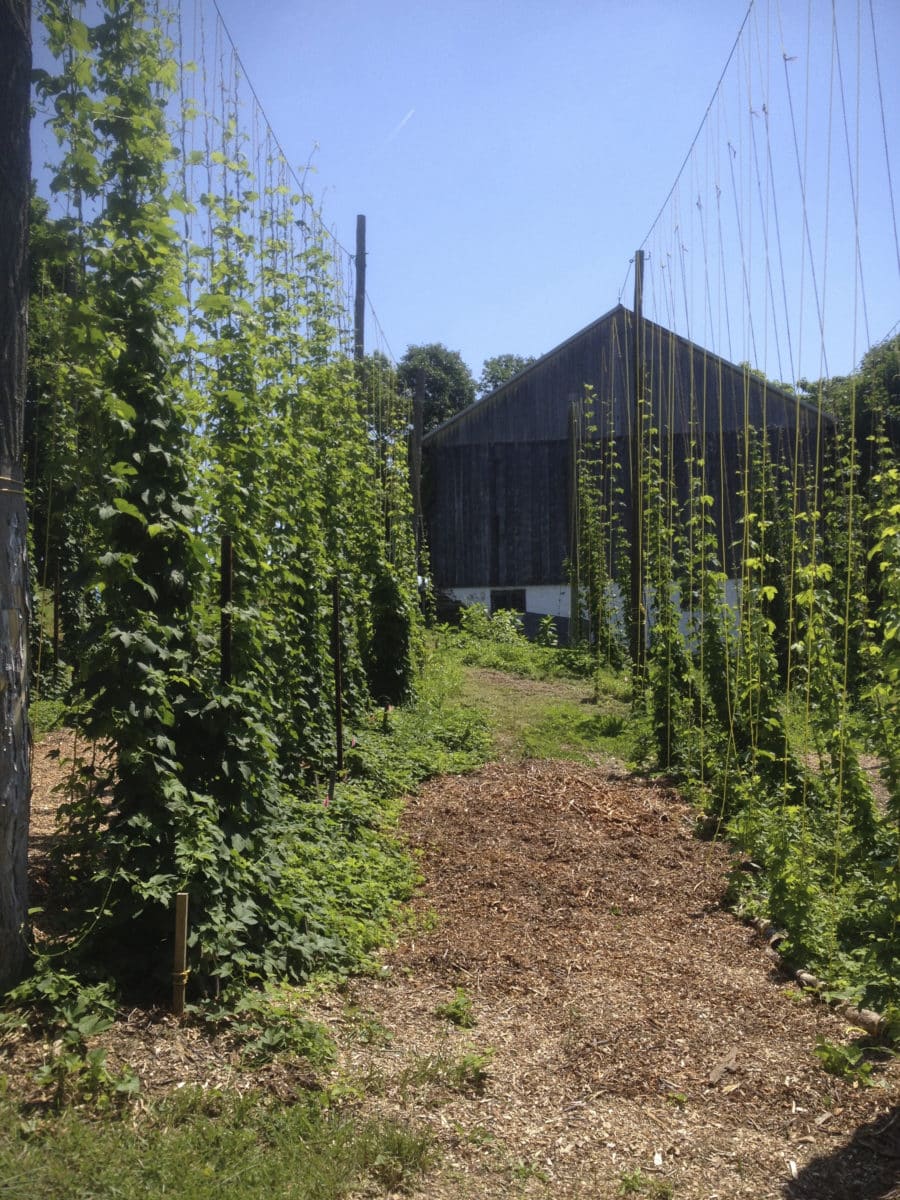by Diane Zatz, with Theo. A. Artz
Why hops?
My husband, Ted, always felt a connection to the Pennsylvania land where he grew up and is increasingly working his way back to the soil. When the old farmhouse on his parent’s bucolic property, ninety miles south of our home in Philadelphia, burned down in 2005, he envisioned the standing barn and remaining stone foundation as a setting for an experimental agricultural project.
Ted wanted to grow a crop that could be managed with our work schedules, but more than that, hops provided a series of interesting problems to solve. In the first summer, Ted felled oak trees for poles, and manually dug the holes for a rudimentary hops trellis system. He prided himself on making good soil, intuitively mixing in sand, peat moss, lime, clay and organic compost. He built a sturdy deck to support 500 gallons of gravity-fed rainwater from the barn’s corrugated aluminum roof.
Hops are a hardy perennial and varieties have different aromas and flavoring characteristics. In 2006 Ted erected a twelve-foot high trellis and mail-ordered five rhizomes of each of three popular cultivars — Cascade, Galena and Mt Hood — just to see if they could thrive. The craft beer movement was picking up steam but Ted’s interest was mainly academic. From his initial research into hops he found that 19th-century German settlers had grown hops and hemp extensively in the area. (Hempfield is the next township over.) He speculated that the weather system on our farm is similar to that in the great hops-growing regions of the Pacific Northwest, with our own mighty Susquehanna River sending a breeze over the ridge with a little extra moisture.
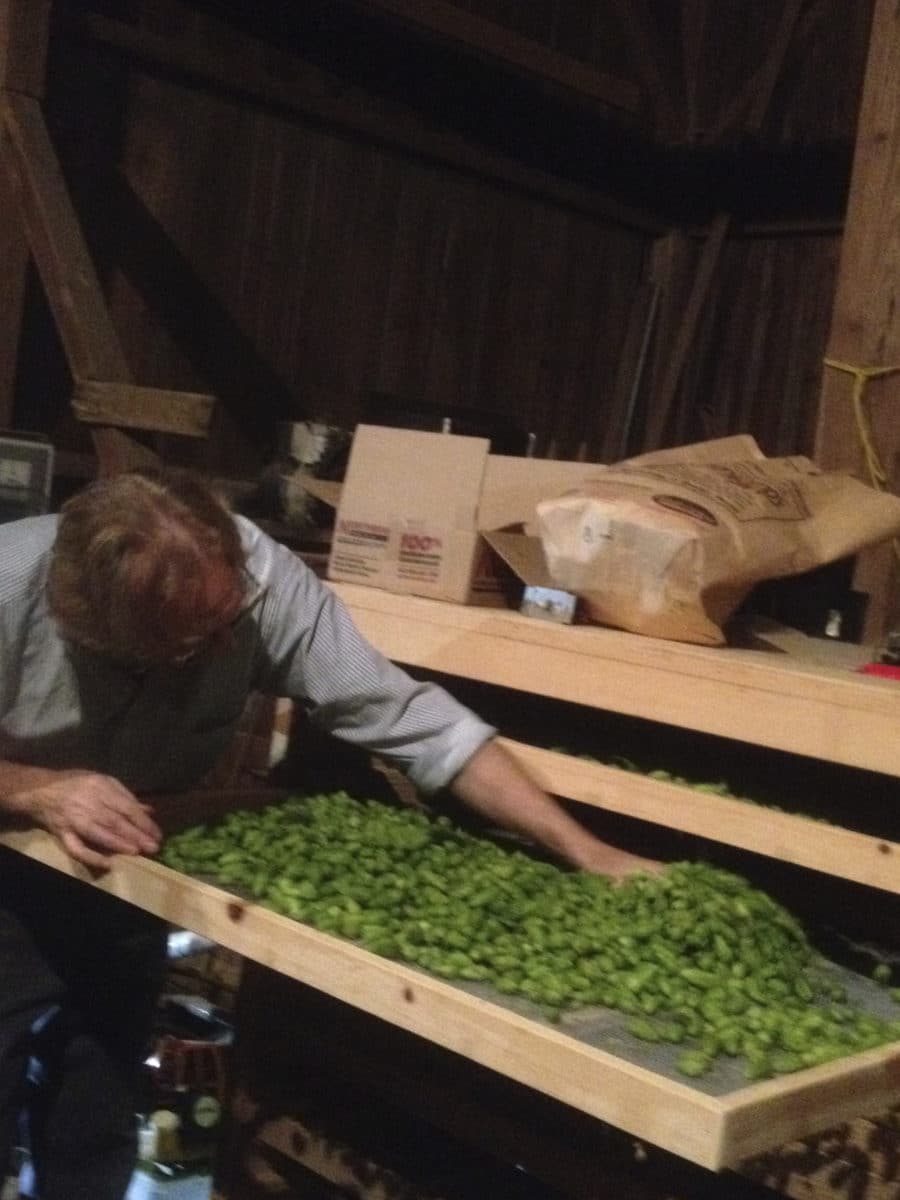
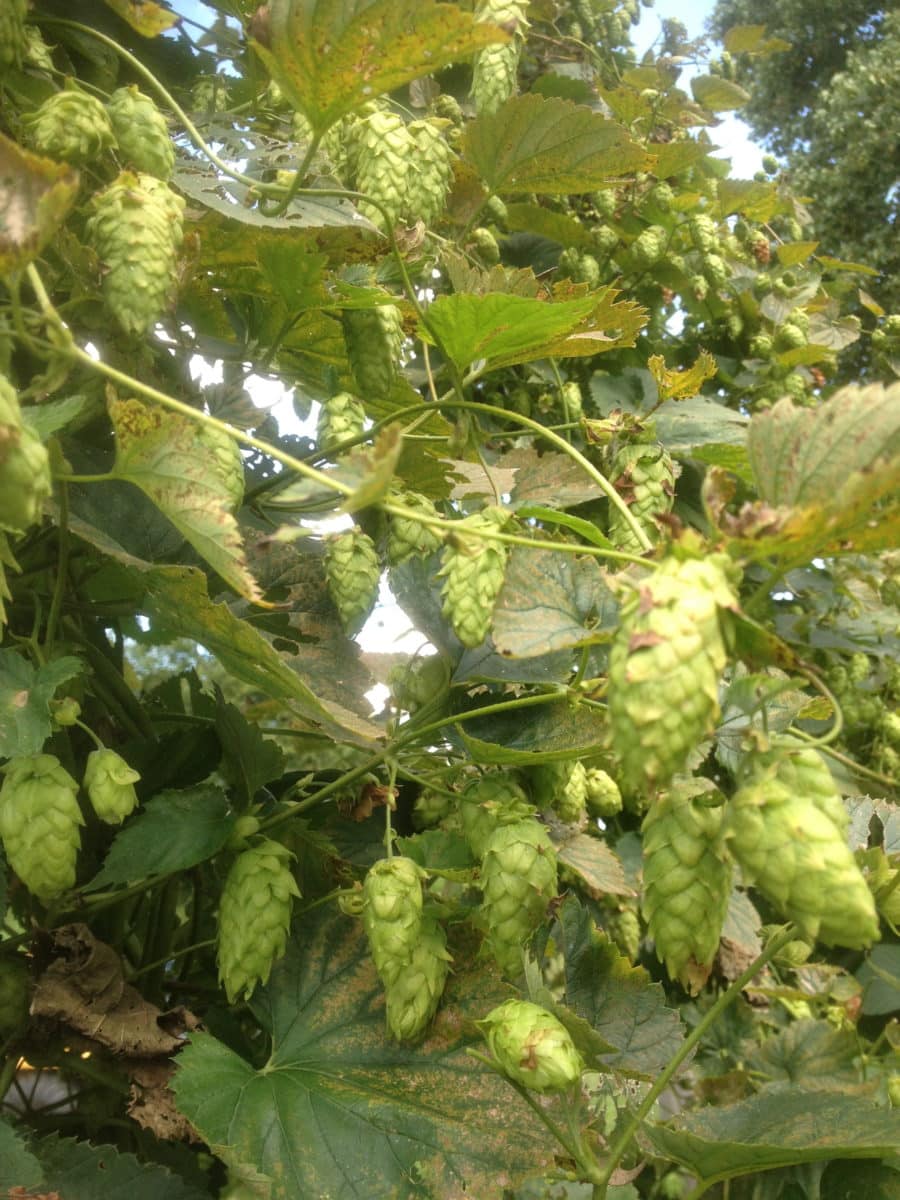
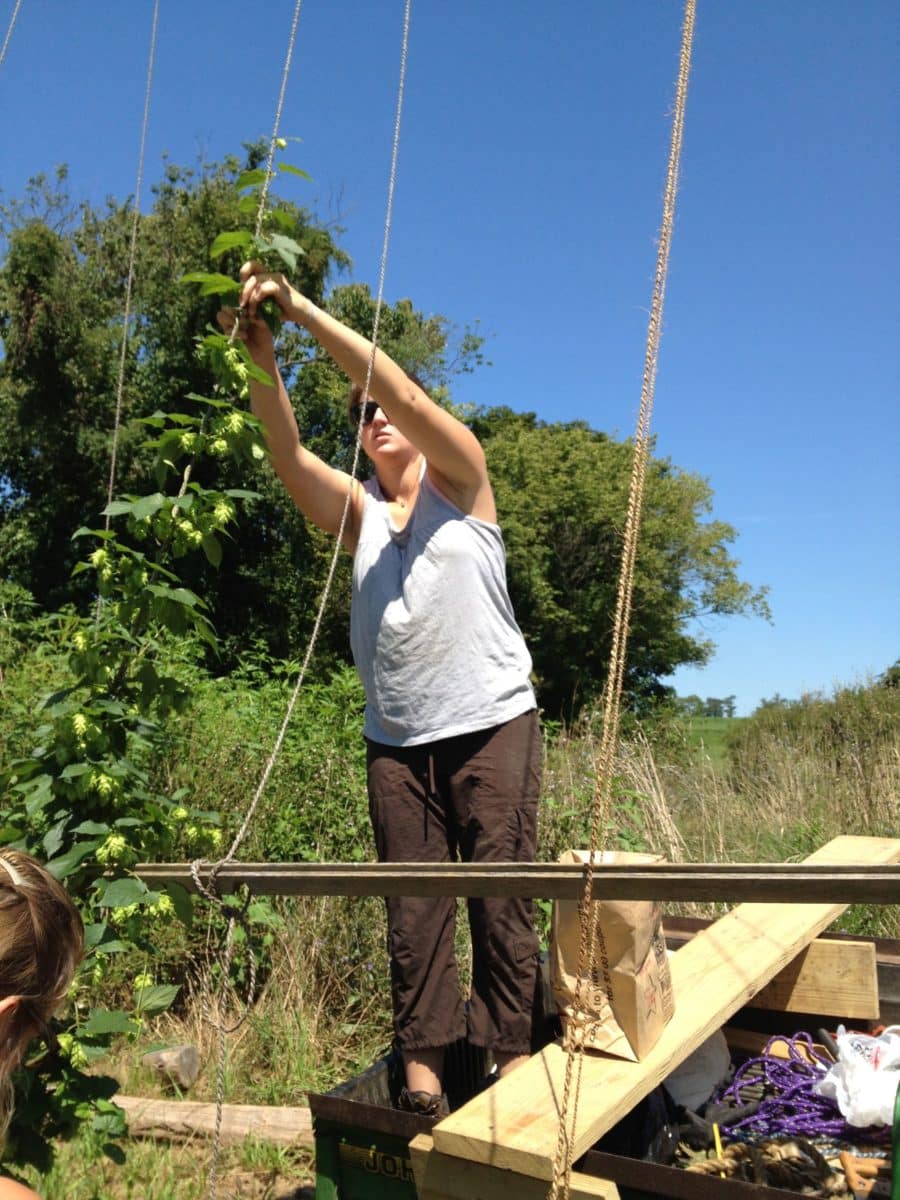
Hops are curious plants that expend much energy to grow prolifically both underground and upwardly, gaining a few inches in a single day. The first bines (the flexible climbing stems) thrived so well that in the following year Ted expanded onto another half-acre. The elevated location of the second yard is ideal. The site faces south and is close to the barn. In subsequent summers Ted tapped into the well left from the house, and reinforced walls of the foundation to preserve it.
Ted is an artist, and the building of the infrastructure of the propagation yard became a site-specific creative project. He harvested 25-foot-long Black Locust poles — ranging from six to twelve inches in diameter — from the forest and planted them three feet into the ground. That effort required hiring a professional pole-setter and together they did an entire yard, eighteen holes in a day, in 95° F (35° C) heat. He erected a cable tethering system, each bound to a deeply buried earth anchor.
Ted continually introduced additional cultivars into similar test beds each summer, to see which would take well to local conditions. We currently cultivate more than twenty-five varieties, including Brewer’s Gold, Cascade, Centennial, Chinook, Cluster, Fuggles, Galena, Golding, Kent Golding, Magnum, Mt Hood, Newport, Northern Brewer, Perl, Santian, Spaten Select, Sterling, Tettanger, Willamette, Wye Viking, and Zeus. Last summer he built an oast dehydrator (to replace our kitchen counter version) large enough to dry the hops as the staggered harvest came in. The moisture is gently removed until several pounds of fresh handpicked wet hops are reduced to a few ounces of dried flowers. We invested in a commercial vacuum sealer and nitrogen flush tank system to package the delicate dried flowers.
For Ted, endless research into hops growing is fascinating. He reads white papers on new breeding programs for hops, follows the Universities of Vermont, Idaho, and Oregon, and has an ever-growing stack of reference books by his bedside. Every time we approach the plants we notice something different. He loves to compare notes with our Amish neighbors. When we ask ourselves why we’re pulling weeds and laboring in the sun, we answer that it is about the challenge of controlling chaos.
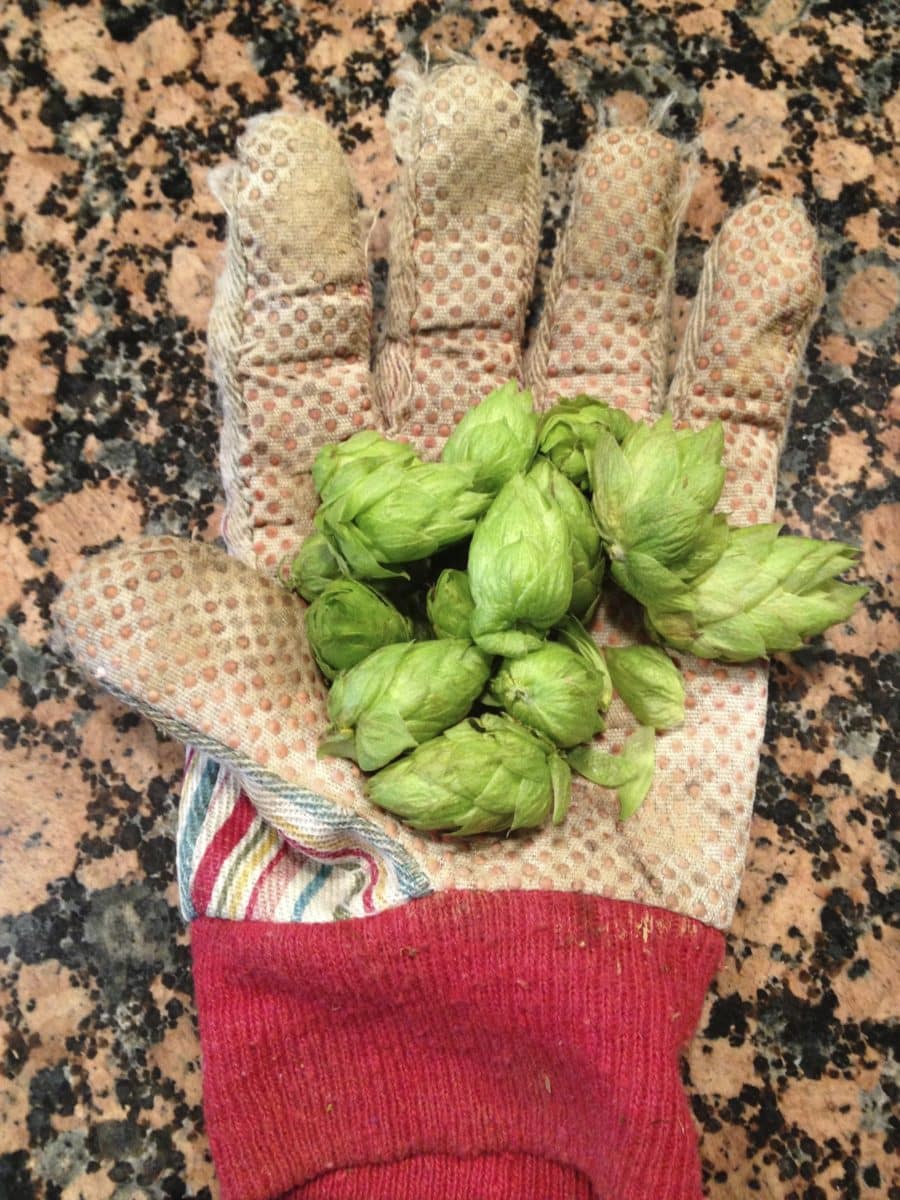

Growing hops is a contemplative experience, a lot of time alone with the plants and one’s thoughts. It is also a communal experience — a labor of love with hard work that couldn’t be accomplished without the generous help of friends and family. The venture has its challenges: growing organically, weather, economies of scale, and marketing. Expansion requires more equipment. Between the summer days of labor-intensive farm work and a school year of full-time university teaching, developing a website and social media outlets are difficult propositions.
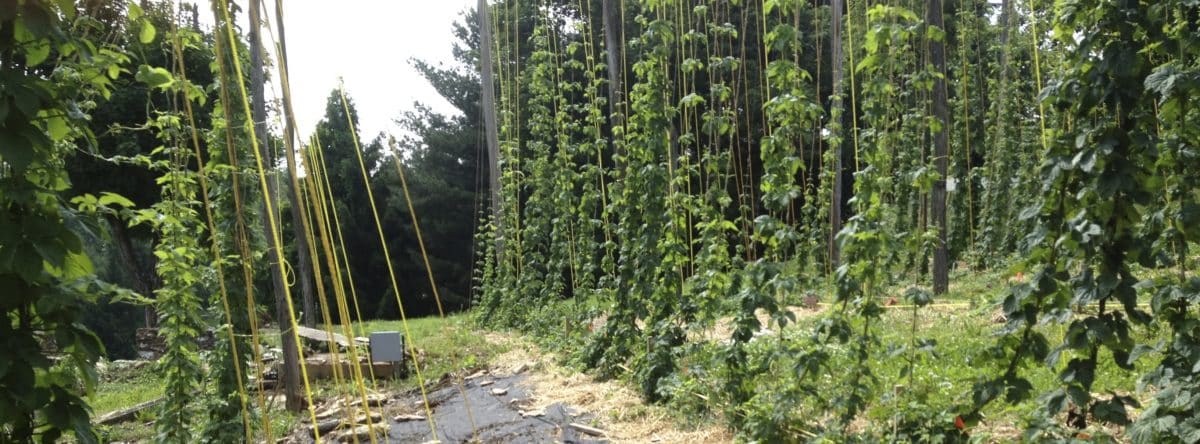
We don’t know what the future will hold for Holtwood Hops. Ted is considering joining an alliance of growers. Ideally sales will be online or to local brew clubs. Will craft brewers value the handpicked, locally grown organic hops? Rhizomes will be available on request to ship out in the spring. I’ll be making hops pillows, boutonnieres and wreathes. Crossing a field of radishes on route to muck out manure for fertilizer from our Amish neighbor’s horse stall was a recent experience that oddly helps make the backbreaking work and uncertainty of the entire experiment seem worthwhile. Pickling the giant Daikons the farmer planted as his cover crop has inspired me in this late autumn to look forward to experimenting with pickling hops shoots (a Belgian delicacy gaining momentum in the USA) next spring. I’ve learned, at Ted’s side, to love the mild musky smell of hops; the soothing aroma of sticky yellow lupulin (a powder on the flowers of female hop plants) and enjoy the breathtaking beauty of Southeastern Pennsylvania’s farmlands. ![]()
In 2012, a hurricane delayed picking and we lost most of the crop. Personal health issues strained the summer of 2013. We ended the season at a local Homebrew Club’s “Summer Sizzle” festival, distributing our entire fresh-picked “wet” harvest of Cascade and Goldings for free.
This past summer, Ted fought the insect world on two fronts: tent caterpillars and Japanese beetles. 2014 had an oddly-timed growing season. Seven new cultivars planted took off better than expected. The early run of weather perfection suddenly accelerated late-phase growing conditions, surprisingly catching us a bit off-guard with their rapid advancement to ripeness. By mid-July we had handpicked the flowers from a number of Cascade, Zeus, Galena, and Mt. Hood bines, as their vines are called. We had approximately 25 pounds of each cultivar that survived the bug and fungus assaults. We joined in the revelry of the Octoberfest in Philadelphia, inviting home brewers and neighbors to sample our hops, hops tea and pillows outside our back door–located right in the middle of the festival.
We don’t know what the future will hold for Holtwood Hops. Ted is considering joining an alliance of growers. Ideally sales will be online or to local brew clubs. Will craft brewers value the handpicked, locally grown organic hops? Rhizomes will be available on request to ship out in the spring. I’ll be making hops pillows, boutonnieres and wreathes. Crossing a field of radishes on route to muck out manure for fertilizer from our Amish neighbor’s horse stall was a recent experience that oddly helps make the backbreaking work and uncertainty of the entire experiment seem worthwhile. Pickling the giant Daikons the farmer planted as his cover crop has inspired me in this late autumn to look forward to experimenting with pickling hops shoots (a Belgian delicacy gaining momentum in the USA) next spring. I’ve learned, at Ted’s side, to love the mild musky smell of hops; the soothing aroma of sticky yellow lupulin (a powder on the flowers of female hop plants) and enjoy the breathtaking beauty of Southeastern Pennsylvania’s farmlands. ![]()

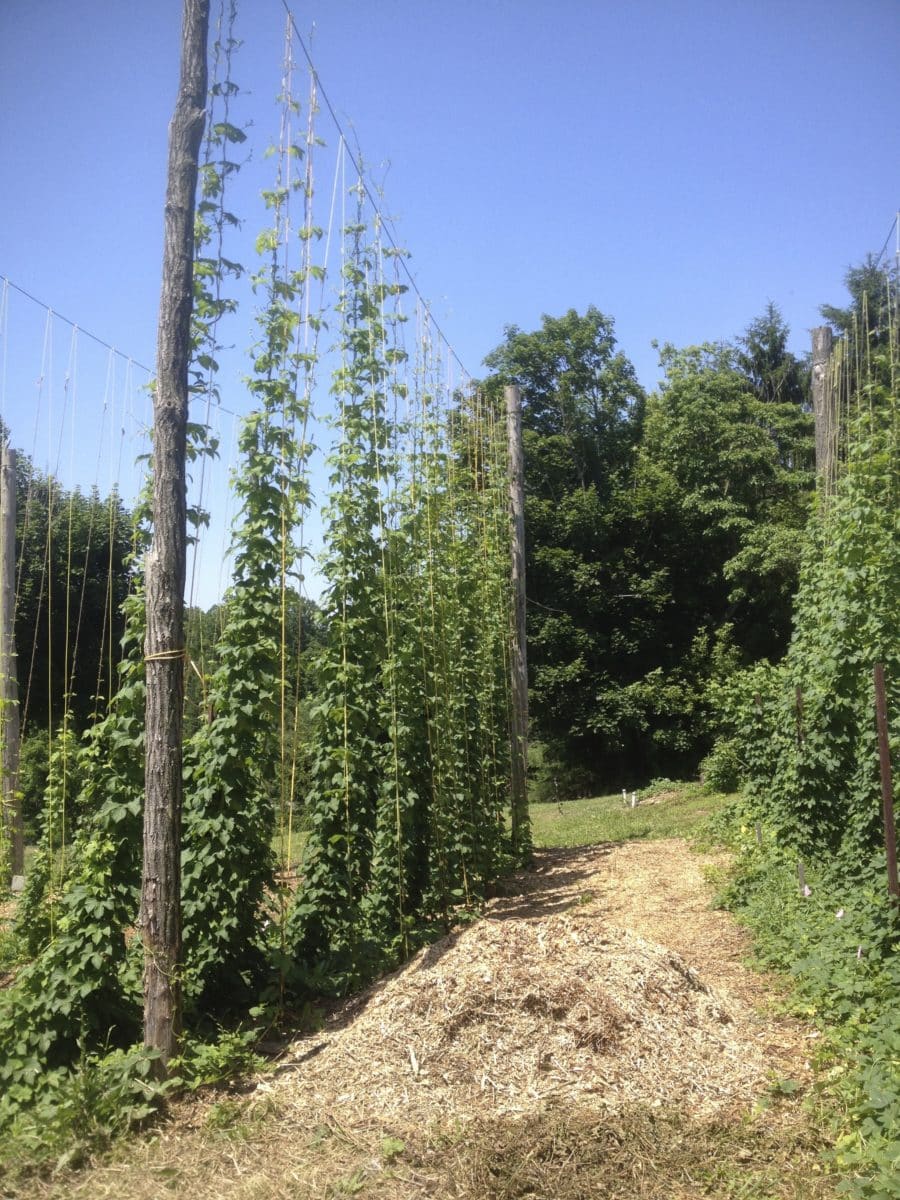
We don’t know what the future will hold for Holtwood Hops. Ted is considering joining an alliance of growers. Ideally sales will be online or to local brew clubs. Will craft brewers value the handpicked, locally grown organic hops? Rhizomes will be available on request to ship out in the spring. I’ll be making hops pillows, boutonnieres and wreathes. Crossing a field of radishes on route to muck out manure for fertilizer from our Amish neighbor’s horse stall was a recent experience that oddly helps make the backbreaking work and uncertainty of the entire experiment seem worthwhile. Pickling the giant Daikons the farmer planted as his cover crop has inspired me in this late autumn to look forward to experimenting with pickling hops shoots (a Belgian delicacy gaining momentum in the USA) next spring. I’ve learned, at Ted’s side, to love the mild musky smell of hops; the soothing aroma of sticky yellow lupulin (a powder on the flowers of female hop plants) and enjoy the breathtaking beauty of Southeastern Pennsylvania’s farmlands. ![]()
